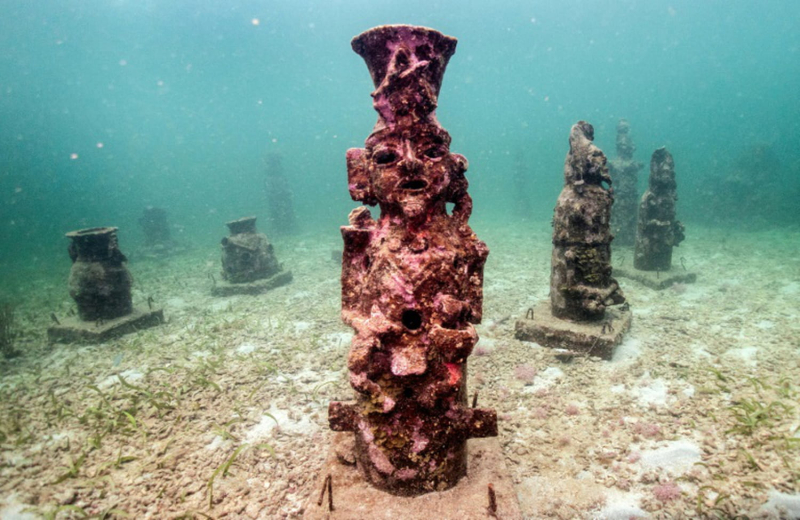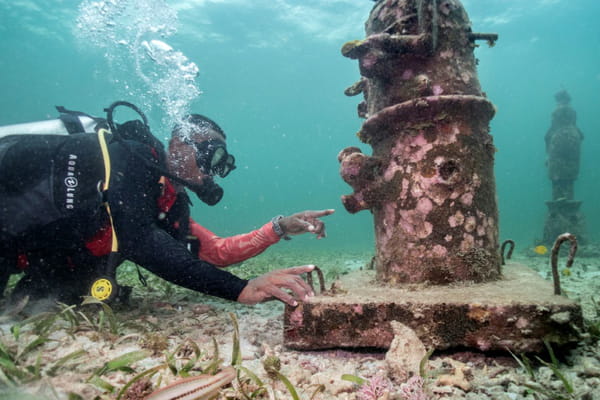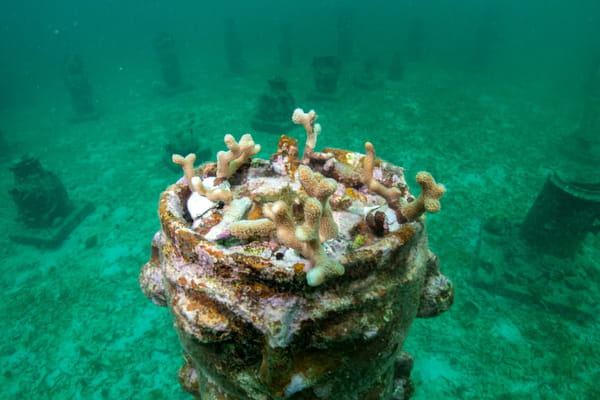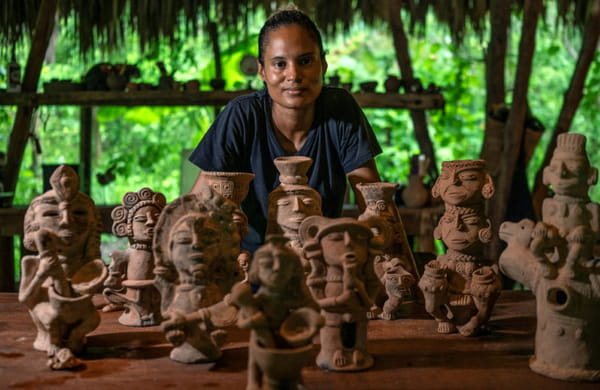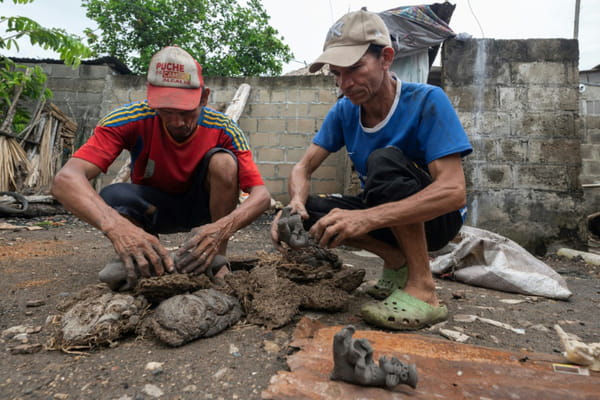Like a small army of specters, their rock silhouettes are outlined at the bottom of the water. In the Colombian Caribbean, a curious underwater museum intends to participate in the protection of coral reefs threatened by tourism and climate change. Twenty-five statues up to 1.5 m high attract divers who venture into the blue waters of the heavenly Isla Fuerte, an island of 3 km2 with 3,000 souls in the department of Bolivar (northeast). Between six and eight meters below the waves, their pre-Columbian style and the abundance of coral which covers them give them the appearance of thousand-year-old wrecks. – “Artistic project ” – “When I noticed the deterioration of the island's natural reefs, I saw in this artistic project a possibility of protecting and enhancing the life of the corals,” Tatiana Orrego, creator of this initiative in 2018, tells AFP. known as MUSZIF. The sculptures are now a refuge for coral reefs, deteriorated over the years by tourism and the increase in sea temperature. 'water. A diver observes the corals that have rooted on the underwater sculptures of the MUSZIF museum, six meters deep, in Isla Fuerte, Bolivar department, Colombia, May 22, 2024 © AFP – Luis ACOSTA And under the sea, the pieces created by two local sculptors or potters become an “ideal substrate” for the growth of new corals, explains Ms. Orrego. Since the start of the year, the world has suffered a massive bleaching event due to record ocean temperatures, according to the US National Oceanic and Atmospheric Administration (NOAA). Colombia has a coral zone equivalent to 100,000 football fields. However, 70% have already lost their colors, according to the Ministry of the Environment. At the beginning, the creator of this museum like no other – the first underwater museum in Colombia – “sown” pieces of coral on the clay sculptures to start the process. Then the corals began to spontaneously colonize the statues, she notes with satisfaction. Corals have begun to colonize the statues of the MUSZIF underwater museum, in Isla Fuerte, Colombia, on May 22, 2024 © AFP – Luis ACOSTA Colorful spots cover the figures of pre-Columbian chiefs and deities, between which multi-colored fish zigzag. Inspired by the works that British sculptor Jason Taylor submerged off the coast of Mexico, Ms. Orrego began looking for local artists to create her underwater museum according to her idea. That's how she met Hugo Osorio and Pedro Fuentes, local potters of indigenous origin who specialize in shaping the mud they extract by hand from a swamp neighbor, located about sixty kilometers from Isla Fuerte. – Zenu “Idols” – Their sculptures imitate the creations of the Zenu people, who inhabited this part of the Colombian Caribbean before the Spanish conquest. Tatiana Orrego, creator of the MUSZIF underwater museum, in front of miniature replicas of submerged statuettes on Fuerte Island, Colombia, May 22, 2024 © AFP – Luis ACOSTA “Our ancestors were also dedicated to pottery. All of this comes from our roots (…) My mother also makes small figurines,” explains Mr. Fuentes, 48, while molding black clay mixed with sand. “We continue to keep this culture alive so that it is not lost”, boasts Mr. Osorio, 59 years old. Their “idols” and other figures evoke motherhood, hunting and the search for firewood, as the Zenu did, they explain, remembering the pieces found during the archaeological excavations in which they participated in their youth in the hills surrounding the marsh. They confess to having sold hundreds of pre-Columbian objects to traders who then offered them at exorbitant prices to Bogota or abroad. Potters Hugo Osorio (L) and Pedro Fuentes (R) cast pre-Columbian-style sculptures in Momil, Cordoba department, Colombia, May 21, 2024 © AFP – Luis ACOSTA “It's a great sadness. Our heritage has been lost. We are trying to recover it, but it is no longer possible”, regrets Hugo Osorio. The museum currently welcomes a little more than 2,000 visitors per year, tourists, divers and freediving enthusiasts. It is a ” alternative space to accommodate tourists and not overload the natural reefs, which already are,” adds Ms. Orrego. In places like Isla Fuerte, where tourism has experienced exponential growth in recent years, human actions threaten the corals even more. Some curious people tear off pieces of coral to bring them back to the surface, elsewhere the damage is caused by involuntary gestures and flapping of palms which damage this fragile ecosystem. “People don't understand that coral is a living being.” All rights of reproduction and representation reserved. © (2024) Agence France-Presse